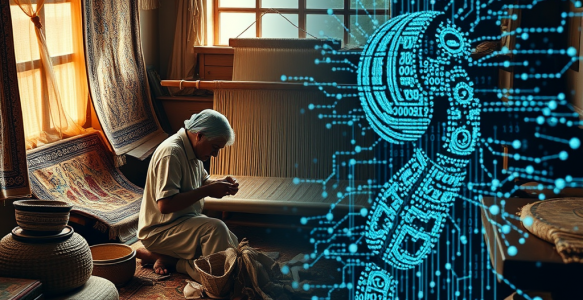To Use Generative A.I. or (K)not, That is the Question… .
As Generative A.I. invades the sacred craft of carpetry, it brings promising efficiency while simultaneously threatening the soul of artistry. As machines churn out designs, what becomes of human value, authenticity, and labour? Will we embrace innovation or drown in soulless, homogeneous creations? If design can be outsourced to statistical machine, how soon until craft – of myriad forms – is itself without value?
















